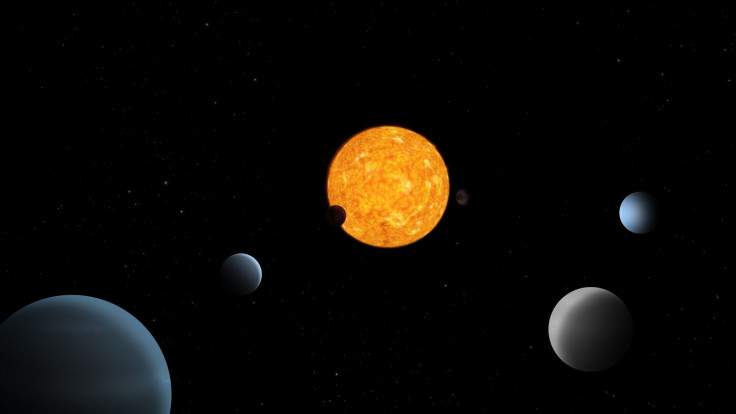5 Of The 6 Planets In This System Are Dancing In Unique Harmony
KEY POINTS
- In a planetary system 200 light-years away, five planets are moving in a special harmony
- Only one known planet in the system is not in resonance with the others
- But their densities are "disorderly," challenging planetary system formation theories
Five of the six planets in a distant planetary system are moving in a unique rhythm, and they appear to be challenging the current understanding of planetary systems' evolution.
The star TOI-178 lies 200 light-years away in the constellation Sculptor. When a team of researchers first spotted it, they thought there were just two planets orbiting the star. However, further observations using various instruments including the European Space Agency's (ESA) Cheops revealed there were six planets, the researchers said in their study published in the journal Astronomy & Astrophysics
What's more, they found that five of the planets are actually moving in "resonance." This means they are moving in a specific pattern as they orbit around their host star, the European Southern Observatory (ESO) news release explained.
Every so often, the planets even align, and the only planet that's not following this resonance is the one closest to the star.
A video provided by the ESO illustrates the rhythm of the planets, with the five in resonance shown in a red orbital path and the other in blue. Make sure to turn on the sound to hear the musical representation of the planetary system's pattern.
"In this artist's animation, the rhythmic movement of the planets around the central star is represented through a musical harmony, created by attributing a note (in the pentatonic scale) to each of the planets in the resonance chain," ESO explained in the video description.
As study lead Adrien Leleu explained in an email to Gizmodo, resonance typically occurs in much younger systems that are still covered by a gaseous disk. However, the planets typically go out of resonance eventually, so finding such a system is quite unique.
It appears to show that TOI-178's evolution was quite gentle, otherwise it wouldn’t have retained the pattern, study co-author Yann Alibert of the University of Bern noted in the ESO news release.
Neat Pattern, But 'Disorderly' Planets
What's even more interesting is that the planets' varying densities are rather "disorderly," as study co-author Nathan Hara of the Université de Genève, Switzerland, described it in the news release. In our solar system, for instance, the rocky planets like the Earth are closer to the sun, while the gas giants are further away. This aligns with the theory suggesting the planets with lower density should be more distant from the host star, but that is not the case with TOI-178.
"It appears there is a planet as dense as the Earth right next to a very fluffy planet with half the density of Neptune, followed by a planet with the density of Neptune. It is not what we are used to," Hara explained.
"This is not what we expected, and is the first time that we observe such a setup in a planetary system," Leleu said in the European Space Agency (ESA) news release. "In the few systems we know where the planets orbit in this resonant rhythm, the densities of the planets gradually decrease as we move away from the star, and it is also what we expect from theory."
According to the researchers, the contrast between the system's neat resonance and the "disorderly" densities of its planets challenges the understanding of how planetary systems form and evolve, and further studies with advanced instruments could shed more light on this unique system.
In the future, the researchers plan to use Cheops to further study the system, the ESA news release noted, perhaps to find other planets and find out why one of them is not in resonance with the others.

© Copyright IBTimes 2025. All rights reserved.






















